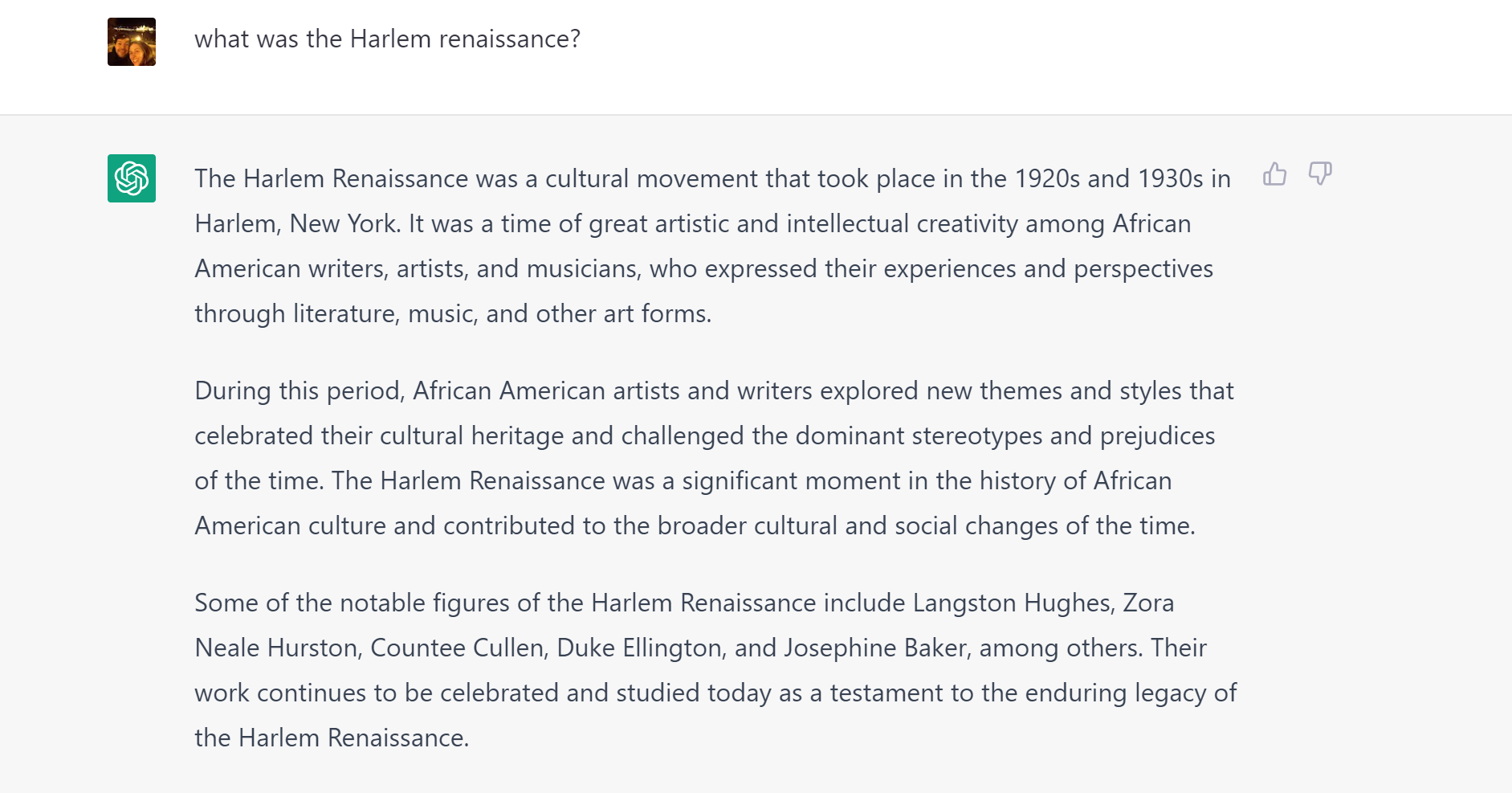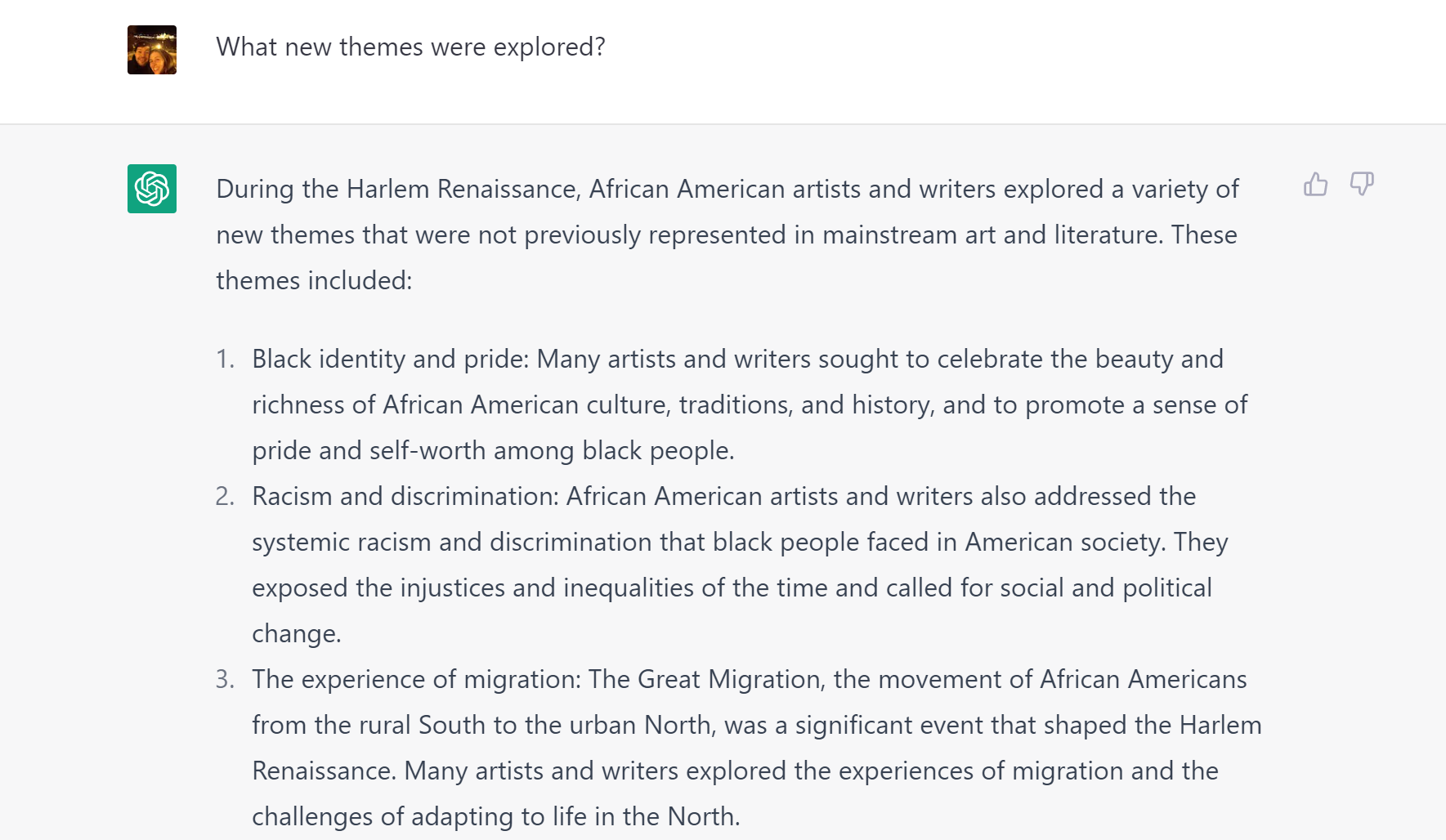CHatgpt: Lesson One-Using the Tool
My previous post I showed I showed the process of asking questions with chatGPT. See the YouTube video here. This got me thinking about the skill of asking good questions. If we have an amazing indexing and researching tool that can do work for us- we should use that to our advantage and make researching faster for students. BUT WHAT ABOUT SOURCES RACHEL?! Don’t worry, I will get to that VERY important lesson within this unit as well.
So here’s the quick and dirty version of the Unit plan. A “tuning in” of asking questions about a new topic with students. They will need to show their questions and responses and give an explanation of why they asked what they asked. Step TWO: (and the follow-up incoming lesson), will have chatGPT write a final essay on the topic. I know you’re thinking what the heck?! Isn’t this what we don’t want it to do?! And I think, well it exists so let’s use it and work it backward a bit to think about sources and reliability and checking where information comes from. Step THREE: Check the sources from the essay and teach students how to evaluate a source, they will turn in what was or was not a worthy source and what makes them say that. Step FOUR: New information they found that was interesting on the site as they played and fact-checked there. As well as a list of new questions they could ask. Step FIVE: ask new questions and see what chatGPT comes up with and rewrite a NEW essay. Step SIX: check these sources and turn in all the research as a summative with a small analysis of the process!!!
So here we go Lesson One and a few disclaimers:
First, ChatGPT needs a phone number to authenticate usage. So here’s the first hurdle for getting permission both from your organization and parents. If you cannot have students use it on their own, you can still use this as a group activity.
Rather than students coming up with their own questions you could do as a group, OR students can still form their own questions and turn those in.
If your students are going to work on their own, then you will need to give time to allow everyone to log in and play a little with silly questions. Then after some playing has happened we will get to work. Introduce the new topic and brainstorm together some great opening questions. We are looking at the Harlem Renaissance. The past assignment was to write an essay on an important figure in the movement. I will be writing this post using the Harlem Renaissance assignment as the case study for this unit, but as you can see it is easily adaptable to all subjects.
For example, after a brainstorming we could decide to start simply with what is the Harlem Renaissance.
From here there is a possibility for a great discussion on what a “good” follow-up question could be. For example what stereotypes were being challenged? What did the notable figures do specifically? Who was… (Langston Hughes, Zora Neale Hurston…), What themes were explored?
Let’s go for what are the themes. We asked this becuase we wanted to know what was important in this movmement specifically.
Here we have an opportunity to keep moving forward with more questions based on the chatGPT response, OR we could go back and ask more about something else. The idea is to have students to be asking deeper questions and to think about WHY they are asking them. So we can go into areas such as what migrations were explored the most in art at the time. Or where did people move to? Was the movement only in Harlem New York? What was new about this? Since this was before the civil rights movement of the 1960s was everyone able to access this art? Who were the most important leaders? Was this just a US-specific movement?
After a few more rounds of asking questions and justifying why they were asked, students should reflect on what a possibly good idea for an essay could be based on this information. This idea will be what they will work with the following day. An important debrief would be to have a discussion about WHY thinking about our questions might be important. A possible generalization to work for is “Questions can shape the quality of information a researcher can access.”
Worksheet for questions can be found here




